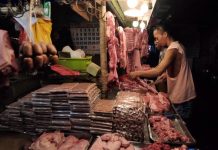Davao Region’s gross domestic national product (GRDP) grew by 9.4 percent in 2016, the highest among Mindanao’s six regions and the third highest in the country.
Eastern Visayas (12.4 percent) and Central Luzon (9.5 percent) leads the country in GRDP.
Philippine Statistics Authority (PSA) Region XI on Thursday OIC-Regional Director Ruben D. Abaro, Jr. bared that the 2016 GRDP of P333,022.026 surpassed its 2015 record of 8.2 percent or P304,412,137 “due to the faster growth of the industry sector”.
In a press conference at the Royal Mandaya Hotel, Davao City, Abaro reported that the industry sector posted the highest growth of 16.5 percent among the major sectors in Davao Region, accelerating from its 2015 record of 12.2 percent.
The service sector continued to account for the biggest share to the region’s economic output at 51.1 percent followed by the industry sector with 36.7 percent share, and agriculture, hunting forestry and fishing (AHFF) with 12.2 percent share.
Industry sector
Abaro noted that the growth of industry sector could be attributed to the improved performance of electricity, gas, and water supply (EGWS) which grew from 16.1 percent in 2015 to 44.5 percent in 2016; while construction grew from 10.2 percent in 2015 to 25.8 percent in 2016.
Meanwhile, mining and quarrying decelerated to 15.7 percent from 25.6 percent in 2015.
“The slowdown is due to the low production on gold,” said National Economic Development Authority (NEDA) Director Maria Lourdes D. Lim, adding that the gold production is controlled by the local government units.
Despite the slowdown on manufacturing industry by 11.2 percent from 12.4 percent in 2015, Lim noted that the figures remain positive.
AHFF
Agriculture, hunting, forestry and fishing (AHFF) also declined from 1.4 percent in 2015 to 1.3 percent in 2016 “due to the drastic effects of El Niño in the second quarter of 2015”.
Service sector
PSA reported that service sector managed to sustain its 7.5 percent growth, with three of its six subsectors posting accelerated growths.
The biggest acceleration was observed in financial intermediation which grew by 10.2 percent from 5.5 percent in 2015. Trade accelerated to 7.5 percent from 7.4 percent, while public administration and defense (PAD) grew by 5.1 percent from 2.6 percent. Meanwhile, transportation, storage, and communication (TSC) decelerated to 6.4 percent from 9.4 percent in 2015.
On the deceleration of real estate, renting and business activities (RERBA) to 6.9 percent from 8.2 percent in 2015, Lim noted that the slowdown was due to the LGUs’ adjustment in construction activities as they are now assuring market analysis before giving the green light to construction.
“The city is also shifting to socialized housing,” said Lim.
The industry sector contributed the biggest share to the region’s economic growth in 2016 at 5.7 percent percentage points followed by the service sector at 3.9 percentage points, and AHFF at 0.9 percentage points.
The GRDP measures the goods and services produced in each of the geo-political regions in the country. The NEDA chief noted that this year’s GRDP report was released almost three months earlier than its annual release
.
“We want to synchronize the GRDP release to the GDP so that the government and the private sector could utilize it for planning,” said Lim.
“The reason for its early release is due to the clamor of the private sector,” commented Abaro who said PSA has achieved its earliest record of releasing the GRDP data by exactly 86 days.
With 9.4 percent GRDP growth, Lim is also expecting double digit growth rate due to the big ticket projects set to be developed in the region for the next five years of Duterte administration.






